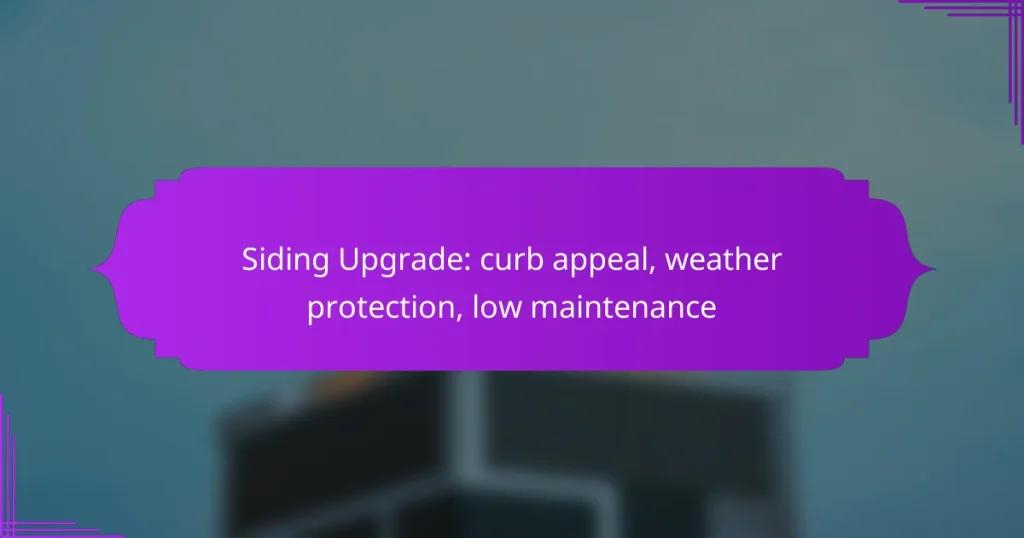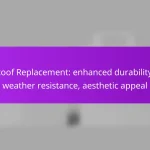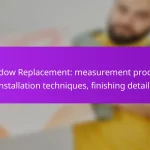Upgrading your home’s siding can dramatically improve its curb appeal while providing essential weather protection. By selecting the right materials, homeowners can enhance their property’s aesthetic value and ensure durability against the elements, all while enjoying the benefits of low-maintenance options that require minimal upkeep.
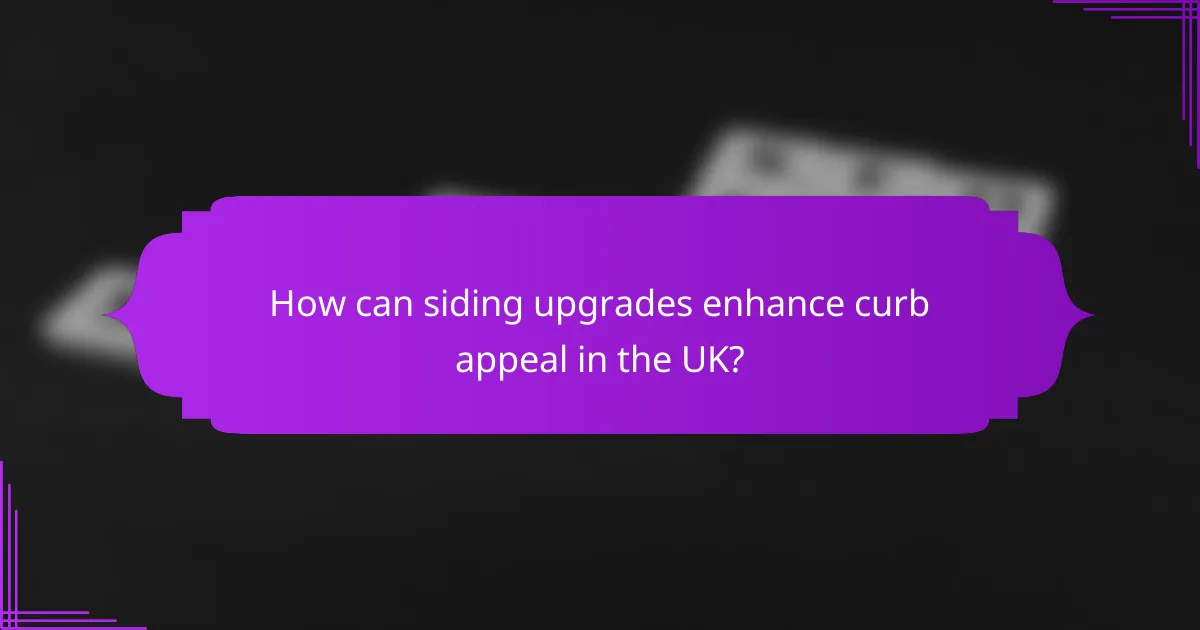
How can siding upgrades enhance curb appeal in the UK?
Siding upgrades can significantly enhance curb appeal in the UK by improving the exterior appearance of a home while providing essential weather protection. Choosing the right siding material can elevate the aesthetic value and increase property desirability, making it an attractive option for homeowners looking to boost their home’s first impression.
Vinyl siding options
Vinyl siding is a popular choice in the UK due to its affordability and low maintenance requirements. Available in a variety of colors and styles, it can mimic the look of wood or other materials while resisting fading and cracking. Homeowners should consider thickness and insulation value when selecting vinyl options, as these factors can impact durability and energy efficiency.
When installing vinyl siding, ensure proper ventilation and flashing to prevent moisture buildup, which can lead to mold or rot. Regular cleaning with a mild detergent can help maintain its appearance and prolong its lifespan.
Wood siding aesthetics
Wood siding offers a classic and timeless aesthetic that can enhance the charm of any home. It is available in various styles, including clapboard, shingles, and board-and-batten, allowing homeowners to choose a look that complements their architectural style. However, wood requires regular maintenance, such as painting or staining, to protect against weather damage and pests.
For those considering wood siding, it’s essential to select treated wood or naturally durable species like cedar or redwood. This can help mitigate some maintenance concerns and extend the life of the siding.
Composite siding benefits
Composite siding combines materials like wood fibers and resins to create a durable, low-maintenance option that mimics the appearance of wood. It is resistant to warping, cracking, and insect damage, making it a practical choice for homeowners seeking longevity without sacrificing aesthetics. Composite siding can also be painted or stained, offering versatility in design.
When choosing composite siding, look for products with a good warranty and ensure they meet UK building regulations for fire safety and insulation. This can provide peace of mind and enhance the overall value of your home.

What are the weather protection benefits of upgraded siding?
Upgraded siding provides significant weather protection by enhancing insulation, resisting moisture, and improving durability against harsh elements. These benefits help maintain a comfortable indoor environment while protecting the home’s exterior from damage.
Insulation properties of fiber cement
Fiber cement siding offers excellent insulation properties, which can help reduce heating and cooling costs. Its dense composition provides a barrier against temperature fluctuations, keeping homes warmer in winter and cooler in summer.
When considering fiber cement, look for products with high R-values, which indicate better thermal resistance. Proper installation is crucial to maximize these insulation benefits, so hiring experienced professionals is recommended.
Moisture resistance of vinyl
Vinyl siding is known for its moisture resistance, making it an ideal choice for areas with high humidity or frequent rainfall. Unlike wood, vinyl does not absorb water, which helps prevent mold and mildew growth.
To ensure optimal moisture resistance, select high-quality vinyl siding that meets industry standards. Regular maintenance, such as cleaning and inspecting for cracks, will further enhance its performance against moisture-related issues.
Durability of metal siding
Metal siding, including aluminum and steel, is highly durable and can withstand extreme weather conditions, such as heavy winds and hail. Its resistance to warping, cracking, and fading makes it a long-lasting option for homeowners.
When choosing metal siding, consider finishes that offer additional protection against rust and corrosion, especially in coastal areas. Regular maintenance, such as repainting or applying protective coatings, can extend the lifespan of metal siding significantly.
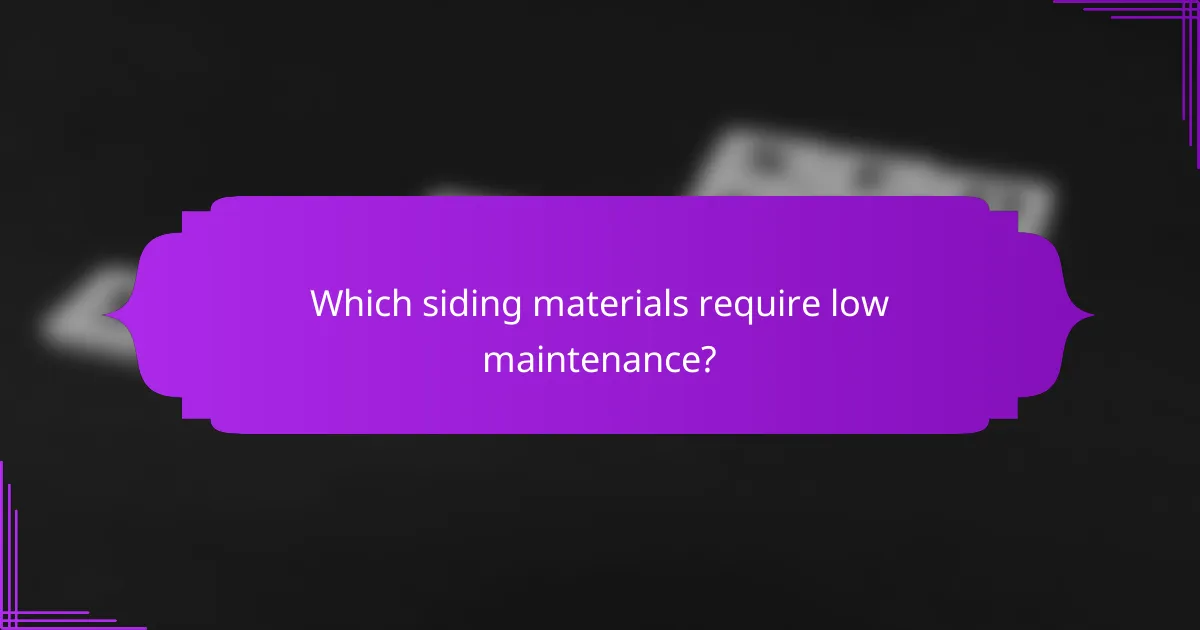
Which siding materials require low maintenance?
Low-maintenance siding materials are designed to withstand the elements while requiring minimal upkeep. Options like vinyl, composite, and metal siding offer durability and weather protection, making them ideal for homeowners looking to enhance curb appeal without extensive care.
Benefits of vinyl siding
Vinyl siding is one of the most popular low-maintenance options due to its resistance to fading, cracking, and peeling. It typically requires only occasional cleaning with soap and water to maintain its appearance.
Additionally, vinyl siding is available in a variety of colors and styles, allowing homeowners to achieve the desired aesthetic without the need for painting. This versatility, combined with its affordability, makes it a top choice for many.
Composite siding maintenance
Composite siding, made from a blend of wood fibers and resin, offers a low-maintenance alternative that mimics the look of natural wood. It is resistant to rot and insects, which reduces the need for frequent repairs.
While composite siding may require periodic washing to remove dirt and debris, it does not need to be painted as often as traditional wood siding. Homeowners should check for any signs of wear or damage every few years to ensure longevity.
Metal siding longevity
Metal siding, often made from aluminum or steel, is known for its exceptional durability and low maintenance requirements. It can last several decades with proper care, resisting rust and corrosion when properly coated.
Regular inspections for dents or scratches are advisable, but overall, metal siding typically only needs a wash to keep it looking fresh. Its fire-resistant properties also add an extra layer of safety for homeowners.

What factors should influence siding material selection?
When selecting siding materials, consider factors like climate, durability, maintenance needs, and local regulations. These elements will significantly affect the performance, appearance, and longevity of your siding, ensuring it meets both aesthetic and functional requirements.
Climate considerations in the UK
The UK’s variable climate necessitates siding materials that can withstand both wet and dry conditions. Materials such as fiber cement and vinyl are popular choices due to their resistance to moisture and rot, making them suitable for rainy regions.
In areas prone to high winds, consider siding that is securely fastened and can handle gusts without damage. Additionally, insulation properties are important; materials with good thermal performance can help maintain energy efficiency throughout the year.
Local building regulations
Building regulations in the UK often dictate specific requirements for siding materials, including fire safety standards and energy efficiency ratings. Familiarize yourself with local codes to ensure compliance and avoid potential fines or issues during inspections.
Consult with local authorities or a building professional to understand any restrictions on materials and colors, especially in conservation areas where aesthetic guidelines may apply. This will help you choose siding that not only meets your needs but also aligns with community standards.
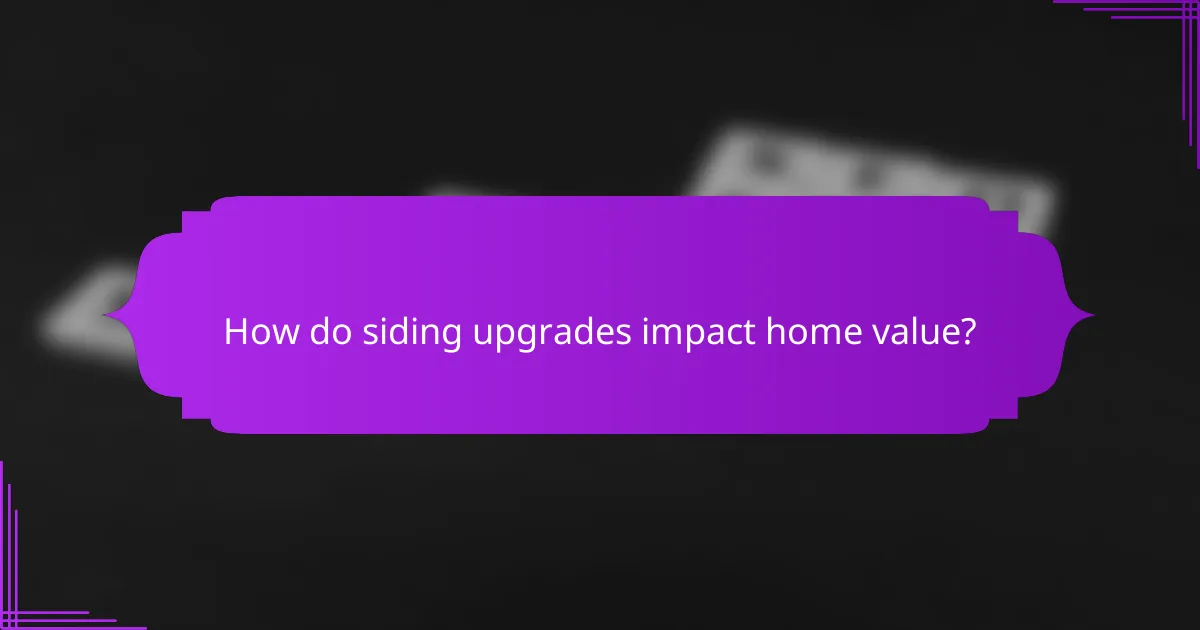
How do siding upgrades impact home value?
Siding upgrades can significantly enhance a home’s value by improving its curb appeal, providing weather protection, and reducing maintenance costs. Homebuyers often prioritize homes with attractive and durable siding, making these upgrades a worthwhile investment.
Return on investment statistics
On average, homeowners can expect a return on investment (ROI) of around 70% to 80% for siding upgrades. This means that if you spend $10,000 on new siding, you could see an increase in your home’s value of approximately $7,000 to $8,000. However, the actual ROI can vary based on factors such as the type of siding chosen and local market conditions.
Vinyl siding tends to offer one of the highest returns, while more premium materials like wood or fiber cement may provide lower ROI due to their higher initial costs. It’s essential to consider both the aesthetic appeal and durability of the siding material when planning an upgrade.
Market trends in the UK
In the UK, the demand for energy-efficient and low-maintenance siding options is on the rise. Homeowners are increasingly opting for materials that not only enhance appearance but also improve insulation and reduce energy bills. This trend is reflected in the growing popularity of composite and insulated siding products.
Additionally, properties with modern, well-maintained exteriors tend to sell faster and at higher prices. Investing in quality siding can make a home more attractive to potential buyers, especially in competitive markets where curb appeal plays a crucial role in the selling process.
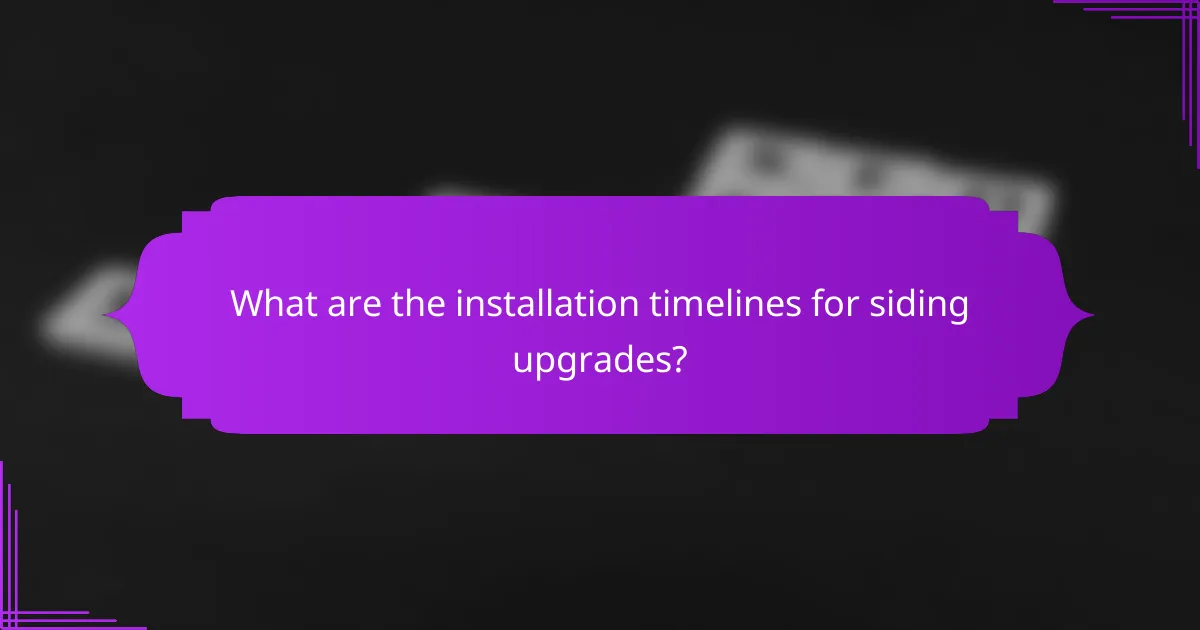
What are the installation timelines for siding upgrades?
The installation timelines for siding upgrades typically range from a few days to a couple of weeks, depending on various factors. Understanding these timelines can help homeowners plan effectively and minimize disruptions during the upgrade process.
Typical installation duration
On average, siding installation can take anywhere from 5 to 14 days. Smaller homes may see quicker installations, while larger or more complex properties might require additional time. Weather conditions and crew availability can also influence the overall duration.
For example, a straightforward vinyl siding project on a standard-sized home might be completed in about a week, while a more intricate installation involving multiple materials could extend the timeline significantly.
Factors affecting installation time
Several factors can impact the installation time for siding upgrades. These include the type of siding material chosen, the size and complexity of the home, and the current condition of the underlying structure. For instance, wood siding may require more preparation and finishing time compared to vinyl.
Additionally, unexpected issues such as weather delays, structural repairs, or permitting requirements can add to the timeline. Homeowners should account for these variables when scheduling their siding upgrades to avoid potential setbacks.
